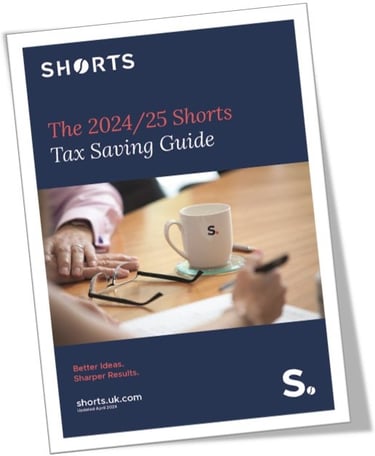.jpg)
Value Added Tax (VAT) is generally applied to most taxable supplies of goods and services in the UK. However, not all businesses are required to register for VAT. Only those with a taxable turnover exceeding the VAT registration threshold must register. Businesses with turnover below the threshold are not required to register but may choose to do so voluntarily for certain reasons.
What is the current VAT threshold in the UK?
Since 1 April 2024, the VAT registration threshold for businesses making taxable supplies in the UK is £90,000. A company must register for VAT if:
-
The value of its taxable supplies over the previous 12 months exceeds the £90,000 threshold; or
-
At any point, there are reasonable grounds to believe that taxable supplies in the next 30 days alone will exceed the threshold.
What is taxable turnover?
Taxable turnover refers to the total value of a business’s taxable supplies. These include sales of goods and services subject to the standard rate (20%), reduced rate (5%), or zero rate (0%) of VAT.
Taxable turnover does not include:
- VAT-exempt supplies (e.g., certain financial, insurance, education, and health services)
- Income from outside the scope of VAT (e.g., some grants and donations)
For the purposes of the registration requirement, sales of capital assets (excluding land) of the business may also be ignored.
What if a business temporarily exceeds the VAT threshold?
If a business temporarily exceeds the VAT registration threshold, it may apply to HMRC for exception from registration. To qualify, the business must demonstrate that it expects that its taxable turnover will not exceed the deregistration threshold of £88,000 in the next 12 months. The company may need to provide evidence a one-off transaction caused it to exceed the threshold.
An exemption from registration may also be requested if most of the business’s taxable supplies are zero-rated.
In both scenarios, HMRC will review the application and supporting evidence. If satisfied, HMRC may grant the exemption and allow the business to remain unregistered. However, if HMRC refuses the application, it will use the information provided to register the company for VAT.
How has the VAT threshold changed over time?
VAT thresholds are usually reviewed annually as part of the UK Budget, although they are not routinely increased. The thresholds were frozen between 1 April 2017 and 31 March 2024, during which time the:
- Registration threshold was £85,000
- De-registration threshold was £83,000
From 1 April 2024, the government increased the thresholds to:
- £90,000 for VAT registration
- £88,000 for VAT de-registration
These increases aim to keep more small businesses outside the VAT regime, reducing administrative burdens and helping to mitigate inflationary pressures.
Will the VAT threshold change anytime soon?
The government announced in the Spring Budget 2024 that the updated thresholds would be frozen but did not specify the duration. As of the 2025/26 tax year, these thresholds apply across the UK.
While there are concerns that the thresholds are not keeping pace with inflation, the government has not indicated any intention to review or raise them further at this time.
The registration threshold in the UK is almost the highest in Europe. Only Switzerland has a similar level and most countries have a threshold below half that of the UK. This is sometimes cited as a reason for the thresholds not tracking inflation.
For some time, commentators have suggested that the UK threshold could be substantially reduced to increase tax revenues, bringing many small businesses into the scope of VAT. For small businesses, this will also increase their administrative and compliance requirements, but may also reduce their competitiveness and profitability if they cannot raise their prices enough to cover all VAT.
VAT thresholds and accounting schemes
VAT accounting schemes are designed to simplify how certain smaller VAT-registered businesses calculate and report VAT to HMRC. The VAT schemes include the flat rate scheme, the Annual Accounting Scheme and the Cash Accounting Scheme.
The Flat Rate Scheme:
This scheme allows small businesses to pay VAT as a fixed percentage of their gross turnover, rather than accounting for VAT on every individual sale and reclaiming the VAT paid on purchases.
Flat Rate Scheme key points:
- Available to businesses with annual VAT-taxable turnover of £150,000 or less (excluding VAT)
- The percentage rate depends on the business sector
- Businesses cannot reclaim input VAT on most purchases (with some exceptions)
The VAT liability under this scheme will be different to under standard VAT accounting.
Annual Accounting Scheme:
Businesses with an annual VAT-taxable turnover below £1.35 million may be eligible to join either the Annual Accounting Scheme or the Cash Accounting Scheme. Both of these schemes provide some form of simplification without, in the long run, affecting the overall VAT liability.
This scheme allows businesses to:
- Submit one VAT return per year instead of quarterly returns.
- Make four interim payments based on estimated VAT liability throughout the year.
- Settle any final VAT balance at the end of the accounting period.
A business must leave the scheme if:
- Its annual taxable turnover exceeds £1.6 million,
- It ceases trading, or
- It becomes insolvent.
Cash Accounting Scheme:
The Cash Accounting Scheme allows businesses to:
- Account for VAT only when cash is received from customers (output VAT), and
- Reclaim VAT only when payments are made to suppliers (input VAT).
It may therefore be beneficial for businesses which hold stock or incur other costs prior to making sales, or with some customers who do not pay promptly. A business must exit the scheme if its VAT-taxable turnover exceeds £1.6 million.
Get your VAT in line
VAT can be a complex requirement for businesses to manage. If you're unsure of your business's VAT compliancy, speaking with a qualified accountant or advisor in VAT can ensure you avoid penalties.

Paschal Okonkwo
I work as a tax advisor at Shorts, helping companies and individuals stay tax compliant in the UK.
View my articlesTags: VAT, VAT compliance


